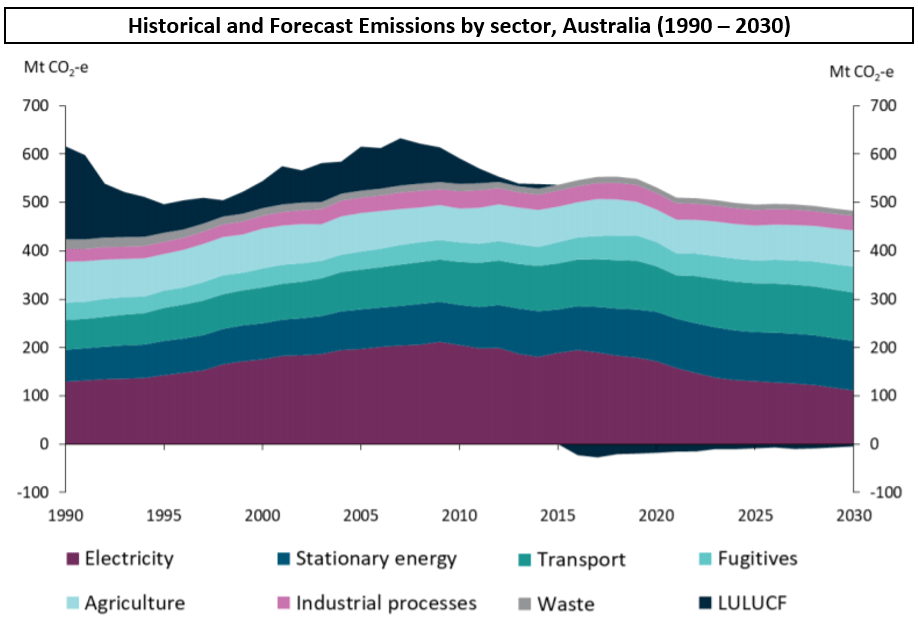Many countries have now committed to net zero by 2050, including Japan, South Korea, the EU and Canada. It is high time Australia did the same and committed to net zero by 2050.
However, such a commitment means nothing if action is not taken today to drive the process to actually achieve these commitments. We need an actionable roadmap to meet our emissions reduction commitments. Australia’s states and many companies and super funds are onboard with this. But this needs to be led by the federal government. Just like it has been MIA on managing COVID-quarantine, the federal government needs to step up on climate change.
Data from the Department of Industry, Science, Energy & Resources shows that Australia’s emissions have remained pretty consistently at or above 500 million tonnes of CO2-equivalent per annum for the last 30 years.

Source: Department of Industry, Science, Energy & Resources, Australia’s Emissions Projections 2020, Figure 8.
A quick look at the graph illustrates why the government prefers to use 2005 as the baseline for emissions reduction targets. Emissions were higher in that year due to land use, land use change and forestry (LULUCF) emissions (black on the graph). These land use emissions are notoriously hard to measure, but the government likes them because they elevate the emissions baseline. This accounting trick makes emissions reduction targets look more ambitious than they really are.
As we see from the graph, the biggest contributors to emissions are electricity, stationary energy (things like mining and manufacturing), transport and agriculture. These four segments make up about 80% of emissions. An effective climate policy must target these segments, reducing emissions and helping to transition workers in carbon-exposed industries that will impacted.

